“THE HATS TEMPTED MARY” (1890)
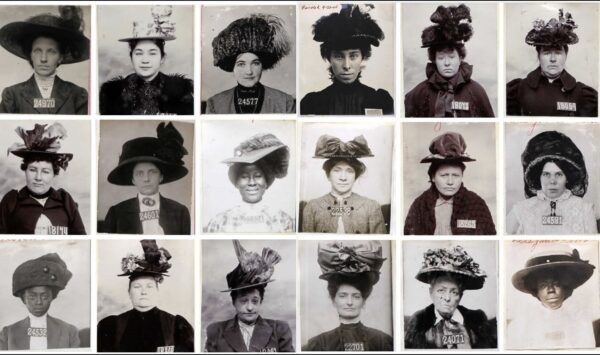
******************************************************************************************************************************** Brownstone Detectives investigates the history of our clients’ homes. The story you are about to read was composed from research conducted in the course of one of those investigations. Do you know the history of YOUR house? ******************************************************************************************************************************** A cursory search through old newspaper archives of the 1890s and early 1900s will produce a large number of incidents whereby patrons of dry goods, and other such stores, were summarily and stealthily robbed by clandestine crooks. Solomon Milkman’s Millinery House – at 442 & 444 Fulton Street – was no exception. A wholesale hat store primarily patronized by women, it soon became the target of thieves looking for money packaged in tiny, easily hidden and transportable containers – purses. The first thieves, though, saw the store itself as the easy target. Usually women, they pilfered mostly feathers, buttons, and other accouterments for the embellishment of women’s hats. In 1890, the first of Milkman’s thieves made the morning papers when a wealthy South Brooklyn woman was caught red-handed, so to speak, stealing goods valued at $3. She would not give her name to the police, as her husband was well-known, so they referred to her as Jane Doe. The police kept her – and her husband’s – identities secret and allowed the wealthy businessman husband of hers to escape humiliation. The following year, in 1891, Nora Duffy, 19, of 79 Sackett Street, was the next identified thief. A “tawdrily dressed young woman,” she was noticed by a detective of Wechsler & […]
BROOKLYN WOMEN LIKE FOREIGN HELP (1915)
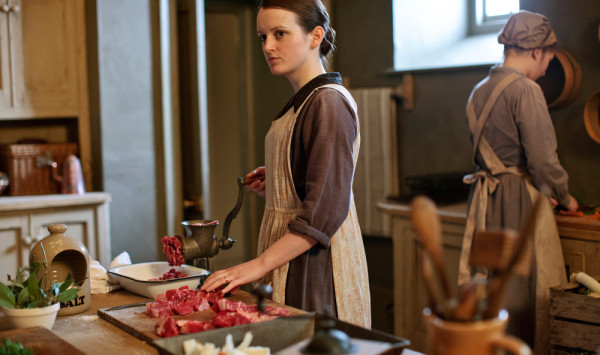
******************************************************************************************************************************** Brownstone Detectives investigates the history of our clients’ homes. The story you are about to read was composed from research conducted in the course of one of those investigations. Do you know the history of YOUR house? ******************************************************************************************************************************** American housewives have always been fond of foreign servants. Brooklyn women were – 100 years ago – more than typical of that trend. Very much like today’s dependence on foreign help (primarily labor from those of Mexican extraction), this trend was likely due – back in Victorian and Edwardian Brooklyn – to an eagerness on the behalf of these women, to have the work in a land where they had few options, as well as to an eagerness, on the behalf of the homeowners, to having cheaper, more dependable labor. Such “help” in the house, according to the New York Times, “freed women from many chores and enabled them to use their time to enhance their moral character and educate themselves – to paint, do needlework, write, engage in physical activity and travel.” The demand, though, for “foreign-speaking girls,” in particular, was “strong,” a 1915 report from a Brooklyn labor office noted. And it was so “especially in Brooklyn,” they noted, where many second generation immigrants lived and thus presented an atmosphere where “a very large number of positions are now waiting for girls who are Polish, German or Scandianvian.” A look at the census of a typical Brooklyn block of the period would produce as many as 10-20 live-in servants, […]
B’KLYN GALS SEEK LEAP YEAR COWBOYS (1912)
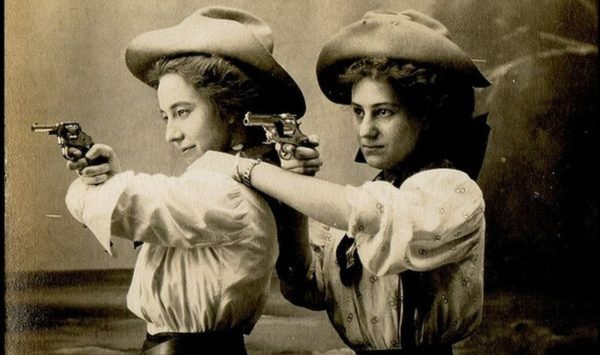
******************************************************************************************************************************** Brownstone Detectives investigates the history of our clients’ homes. The story you are about to read was composed from research conducted in the course of one of those investigations. Do you know the history of YOUR house? ******************************************************************************************************************************** “Come on boys; don your riding chaps, brush up your sombrero and dig out your rusty six-shooter and look-like a moving picture hero!” So started the article in the Sacramento Bee in April of 1912 about two Brooklyn sisters who were looking far afield for long-distance leap year affairs. Alma and Lou Bahn of 546 Washington Avenue, a boarding house between Fulton Street and Atlantic Avenue known as The Berwick, were taking this leap year business seriously, it seemed, and the men of the borough of Brooklyn, it seemed, could not hold down the sisters’ adventuresome spirits. “They want to correspond with you and perhaps the corresponding may lead to love and to the altar,” continued the Bee story. “The girls apparently realize that California is overrun with cowboys and that some of them are so dare devil and roguish that they buy their chewing gum in cigar stores,” continued the Bee. “Therefore, they ask for the names of several in order that they can each pick out a ‘nice’ cowboy and not a Black Bart the second or a California Jesse James. “The Brooklyn belles do not give their ages, but their pictures indicate that they are, or were, young. That they are not idle flirts seeking to catch some […]
“MORALS OF MINNIE” ON GARFIELD PL. (1912)
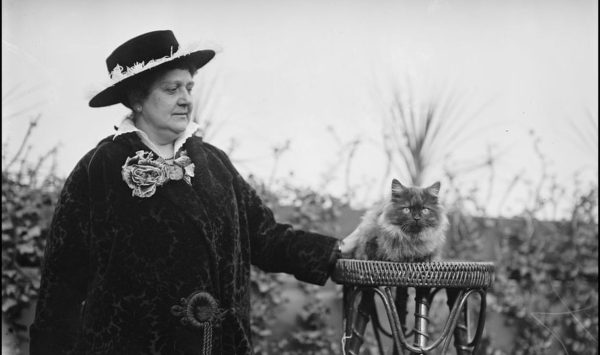
******************************************************************************************************************************** Brownstone Detectives investigates the history of our clients’ homes. The story you are about to read was composed from research conducted in the course of one of those investigations. Do you know the history of YOUR house? ******************************************************************************************************************************** In 1912, a Park Slope cat named Minnie found herself in some hot water. According to a complaint, Minnie’s claws had allegedly performed some serious mutilation to a neighbor’s roof. Here, now, are the details of: THE CURIOUS CASE OF THE CAT THAT CLAWED Location – Garfield Place (between 6th and 7th avenues). Suspect’s address – No. 182 Garfield Place, the Inasmuch Home for Aged Women. Claimant’s address – No. 178 Garfield Place, home of one William Albert Robbins, attorney. Suspect – one “Minnie,” a white Persian, and allegedly “immoral,” cat. THE WANDERINGS OF THE “INASMUCH” Around 1909, the Inasmuch Home for Aged Women moved from its previous location on Bergen Street to its new home at No. 182 Garfield Place in Park Slope between 6th and 7th Avenues. The Inasmuch (sometimes referred to as the “In-As-Much” by sloppy journalists) was a “charity” home for “aged women who are unable to get into other homes,” run through contributions and donations. It was founded in 1905, a few years before the move to Garfield Place. At that time, it existed in the Gowanus at No. 390 Douglass Street, and later moved to (what would become) the Boerum Hill section at No. 226 Bergen Street. By 1920, when it was finally closed, the […]
THE WHITE ELEPHANT OF AVENUE “O” (1914)
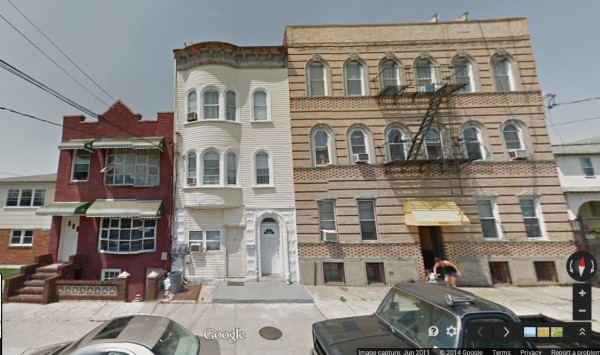
******************************************************************************************************************************** Brownstone Detectives investigates the history of our clients’ homes. The story you are about to read was composed from research conducted in the course of one of those investigations. Do you know the history of YOUR house? ******************************************************************************************************************************** We came across an old newspaper photograph from 1914, republished 30 years later in an old newspaper in 1954. This picture not only celebrates our first entry for a house in the Flatlands section of Brooklyn, but it specifically illustrates a “long-familiar landmark in Old Flatlands.” So noted the text accompanying the picture in the Old-Timers section of the Brooklyn Daily Eagle from May of 1954. Having stumbled across this interesting picture, we were curious to learn if the 2-story and basement structure in question – No. 5407 Avenue O, Brooklyn – was still there, and, by the way, if it was still “white.” So, we looked the address up on Google Maps, expecting to find a shopping mall or a 1940s era soap factory, and – miracle of miracles – there it was! There is a “newer” house to the left of it now, and it seems to have been faced with some vinyl siding (yes, white), but the house appears to be largely as it was back in 1914. The story accompanying the pic in the 1954 article reads as follows: “THE OLD WHITE ELEPHANT”-This picture, taken in 1914, shows a long-familiar landmark in Old Flatlands located at 5407 Avenue O.” COMPLETE FAMILY “The Di Carlo family is shown. […]
PARK SLOPE URNS vs. BASEBALL BATS (1914)
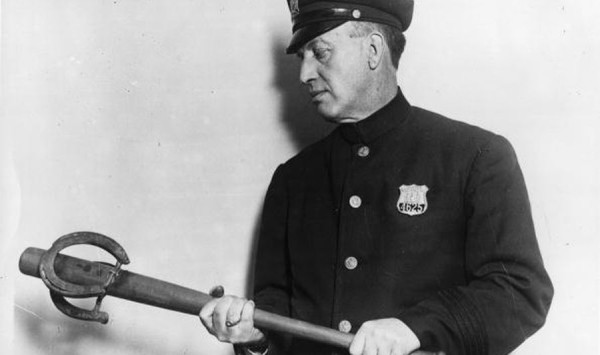
******************************************************************************************************************************** Brownstone Detectives investigates the history of our clients’ homes. The story you are about to read was composed from research conducted in the course of one of those investigations. Do you know the history of YOUR house? ******************************************************************************************************************************** On a still warm September morning in 1914, residents of the homes along the first block of Prospect Park Southwest woke to find something out in front of their houses distinctly off-kilter. As they exited their limestone rowhouses, several of them were shocked to see what appeared to be concrete rubble strewn up and down the block along the sidewalks and within their gates. Leaving their doors and approaching their gates, they began to realize the inanity of the cause – many of their decorative concrete urns, which had been perched peacefully upon the short columns flanking their front gates, had been destroyed overnight. As neighbored surveyed the block, there seemed to be no method to the madness of the demolition of these pieces of architectural ornamentation. Simply put, some neighbors had theirs undisturbed, while others’ urns were a pile of concrete on the sidewalk. The blame was quickly laid squarely at the feet of the local youth – toughs, rowdies, gangs, hoodlums. HOODLUMS It was a common story of the day. Gangs of loafers gathered on corners assaulting women verbally as they passed into the park. Roughs fighting along certain streets at odd hours of the mornings. Rowdies, after drunken trips to Coney Island, ending their nights on a high […]
A WOOD FRAME DEATH SENTENCE (1914)
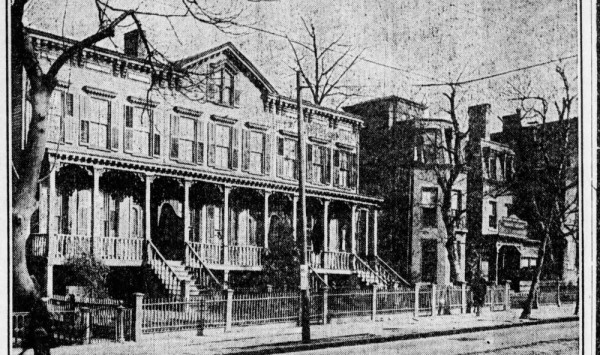
******************************************************************************************************************************** Brownstone Detectives investigates the history of our clients’ homes. The story you are about to read was composed from research conducted in the course of one of those investigations. Do you know the history of YOUR house? ******************************************************************************************************************************** Wood frame dwellings were once the norm in Brooklyn. Before a series of laws were enacted in the mid-1800s remanding that houses be constructed of “non-flammable” materials, houses had generally been made of wood. And wooden houses existed everywhere because they were simple to build, cheap in their construction and costs of materials, and their primary element – wood – was everywhere available. As “non-flammable” construction – mostly brick and brownstone – became the norm throughout the borough, these old structures were systematically torn down and replaced with the newer buildings. So, today, when you see a wooden house anywhere in Brooklyn – esp. closer to the city center – you are seeing a rare commodity, as what’s left of these structures is being torn down all around us by developers planning who are building larger and higher-occupancy buildings in their place. Back in 1914, though, people were generally tired of the wood structures – happy to see them meet the wrecking ball to be replaced by brick and mortar. So, no one lifted an eyebrow that year when the Park Slope YMCA purchased three of these type structures – with plans to level them for their new building. THE “Y” BUYS THREE TEAR-DOWNS In late 1914, the YMCA on the […]
“THINGS GIRLS LIKE TO DO…” (1917)
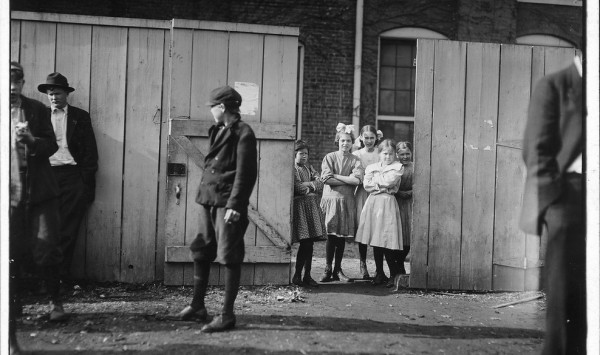
******************************************************************************************************************************** Brownstone Detectives investigates the history of our clients’ homes. The story you are about to read was composed from research conducted in the course of one of those investigations. Do you know the history of YOUR house? ******************************************************************************************************************************** “In a kitchen where there is no sink, the substitute should be a steady table.” “Try to clean only as much each day as can be can be put back into habitable order by the time the men of the household come home.” “I cannot vouch for Plaster of Paris, but I can for corn meal and flour, for with it I once successfully cleaned a white kitten.” Such are some of the excepts of “Things Girls Like to Do,” a manual on domestic work for the young lady of 1917, which today is a window into the maintenance of a household 100 years in the past. The world of domesticity in the late nineteenth and early twentieth century was changing rapidly, as indoor plumbing came into being and electricity introduced into the home. And so the “women’s work” of the household necessitated convenient instruction for girls who would some day take on the sole responsibility of “keeping house.” “Things Girls Like to Do” was that little primer for that period. Of more interest today to those maintaining historic homes, it gives loads of specific insight into how today’s old houses were initially kept up. From the use of burnt pine ash for polishing copper, to the extensive use of calcimine […]
THE “SPITE WALL” OF CALDERVILLE (1919)
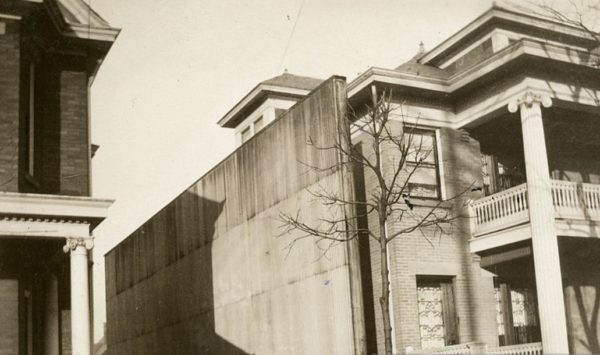
******************************************************************************************************************************** Brownstone Detectives investigates the history of our clients’ homes. The story you are about to read was composed from research conducted in the course of one of those investigations. Do you know the history of YOUR house? ******************************************************************************************************************************** We have all heard of the “spite house.” It is a type of building – constructed on an impossibly small piece of land – existing for a single purpose. That purpose? Spite. In 1919, Marcus Siegelman produced a variation on this theme. He built a spite “wall.” BAD WALLS MAKE BAD NEIGHBORS Sitting in his backyard one day, Siegelman watched as two holes began to appear through the brick wall at the end of his yard. That brick wall was the side of his neighbor’s house, and those holes were about 15 feet up from ground level. Small at first, they eventually grew to the shapes of a couple of large rectangles. Siegelman immediately had his suspicions, but he waited to see what would happen. Slowly, after they were made perfectly squared, into the new openings were installed a couple of sash windows. Siegelman, who lived at No. 1627 10th Avenue in what was known at the time as Calderville (but is referred to today as Windsor Terrace), was now suddenly at war with his neighbor, E. L. Morris, a former policeman who lived at No. 192 Windsor Place (the house behind his with the new windows). For Morris now had a perfect view into Siegelman’s backyard – and his home. […]
BOYS WILL BE “PONY BOYS” (1915)
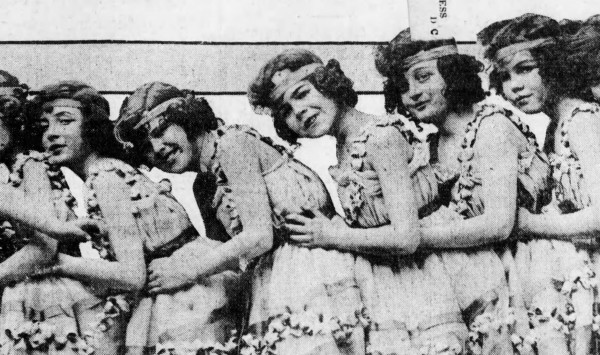
******************************************************************************************************************************** Brownstone Detectives investigates the history of our clients’ homes. The story you are about to read was composed from research conducted in the course of one of those investigations. Do you know the history of YOUR house? ******************************************************************************************************************************** In the early part of the last century, a Brooklyn school boy could put on a dress with nary a thought of it. Cross-dressing – for one night of the year, at least – became so popular with some prep school boys, that they looked forward to it eagerly every year, along with their admirers. This cross-dressing showcase was known as the “Pony Ballet,” the most popular part of the fundraiser put on by Poly Prep which was performed by the pre-pubescent boys of the Poly Prep Country Day School. At the Brooklyn Academy of Music, where the spectacle was celebrated annually, it was not only acceptable for every 10-year-old boy to wear a dress – it was expected. “In 1915’s show the ballet was composed of a dozen youngsters from the lower grades of the school made up as girls. They made the liveliest and most attractive collection of ‘ponies’ seen on the stage in a long time.” A few years later, in 1917, such songs as “I’m a Regular Man Down Here,” and “Hello, Mr. Dream Man,” were sung with bravado in the show “Three Queens.” But the cake must have been taken by the Poly Prep boys in 1914 when the “girls” came out in “doll baby dresses […]